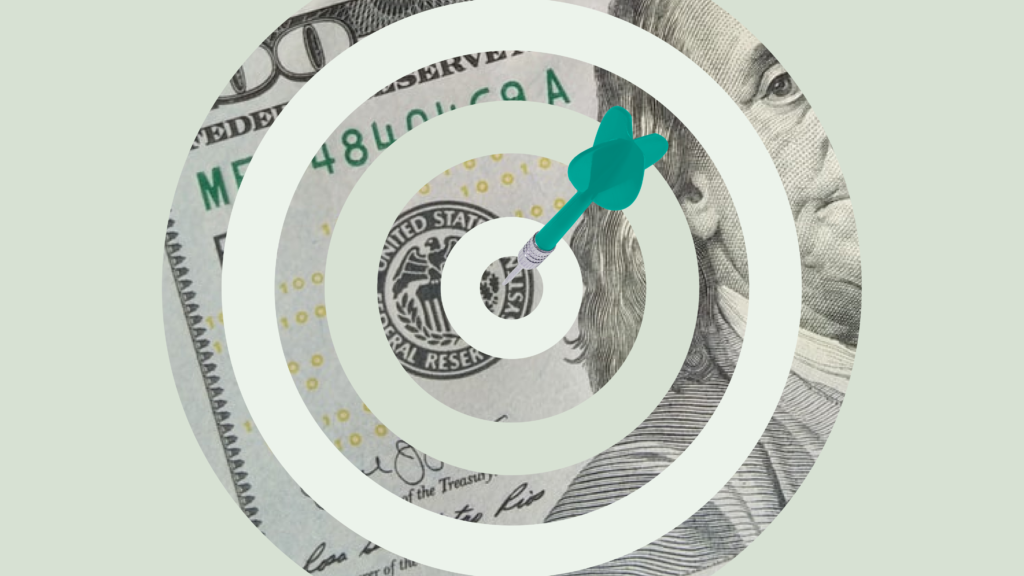Best Practices For Setting Realistic Savings Goals And Achieving Them
Saving money is a critical aspect of financial planning. It helps you prepare for emergencies, achieve your dreams, and secure your future. However, setting savings goals that are both realistic and achievable can be challenging. Without proper planning and execution, it’s easy to lose track of your objectives. This guide will walk you through the best practices for setting realistic savings goals and achieving them effectively.
Understanding the Importance of Savings Goals
Before diving into how to set savings goals, it’s important to understand why they matter.
- Provides Direction: Savings goals give you a clear purpose for saving money.
- Encourages Discipline: When you have a goal in mind, it becomes easier to resist unnecessary spending.
- Prepares You for Emergencies: Having specific savings targets ensures you’re ready for unexpected expenses.
- Helps Achieve Dreams: Whether it’s buying a house or going on vacation, savings goals make big dreams attainable.
Without defined goals, saving money can feel aimless. By setting clear objectives, you create motivation and accountability.
Step 1: Evaluate Your Current Financial Situation
The first step in setting realistic savings goals is understanding where you currently stand financially.
Key Actions:
- Calculate Your Income:
- Determine your total monthly income after taxes.
- Include all sources like salary, freelance work, or side hustles.
- Track Your Expenses:
- List all fixed expenses such as rent/mortgage, utilities, insurance premiums.
- Identify variable expenses like groceries, dining out, entertainment.
- Assess Your Debts:
- Note down any outstanding debts such as credit card balances or loans.
- Understand how much of your income goes toward debt repayment each month.
- Determine Disposable Income:
- Subtract your total expenses from your income to see how much is left for saving.
By evaluating your financial situation thoroughly, you’ll know exactly how much money you can realistically allocate toward savings without overburdening yourself.
Step 2: Set SMART Savings Goals
SMART stands for Specific, Measurable, Achievable, Relevant, and Time-bound. This framework ensures that your goals are clear and actionable.
How to Apply SMART Principles:
- Specific:
- Define exactly what you’re saving for.
- Example: Instead of saying “I want to save money,” say “I want to save $5,000 for a car.”
- Measurable:
- Attach numbers to your goal so progress can be tracked.
- Example: Save $500 per month until the target is reached.
- Achievable:
- Ensure the goal fits within your current financial capacity.
- Example: If saving $500/month isn’t feasible due to other obligations, adjust it to $300/month instead.
- Relevant:
- Align the goal with your overall financial priorities.
- Example: Saving for an emergency fund might take precedence over saving for a vacation if you don’t have one yet.
- Time-bound:
- Set a deadline for achieving the goal.
- Example: Save $5,000 within 12 months by putting aside $417 every month.
Using SMART criteria makes it easier to stay focused and motivated throughout the process.

Step 3: Prioritize Your Savings Goals
Not all savings goals are equally urgent or important. Prioritizing helps ensure that essential needs are met first before focusing on less critical objectives.
Categories of Savings Goals:
- Short-term Goals (0–1 year):
- Emergency fund (3–6 months’ worth of living expenses).
- Small purchases like electronics or holiday gifts.
- Medium-term Goals (1–5 years):
- Down payment on a house or car.
- Saving for education or certifications.
- Long-term Goals (5+ years):
- Retirement fund contributions.
- College tuition for children or major investments like property purchases.
Tips:
- Focus on building an emergency fund first if you don’t already have one.
- Pay off high-interest debts before aggressively pursuing other savings goals since debt interest can negate potential gains from saving efforts.
Step 4: Create a Budget That Supports Your Goals
A budget is essential when working toward any financial objective because it ensures that every dollar has a purpose.
Steps to Build an Effective Budget:
- Use the 50/30/20 Rule:
- Allocate 50% of income toward needs (rent/mortgage payments).
- Spend 30% on wants (entertainment).
- Save/invest at least 20%.
- Track Spending Habits:
- Monitor where most discretionary spending occurs using apps/spreadsheets.
- Identify areas where cuts could free up funds—like reducing dining out frequency or canceling unused subscriptions/services!
- Automate Savings Contributions:
- Set automatic transfers directly into dedicated accounts aligned w/each specific goal timeline!
4 . Adjust Regularly As Needed :
Life changes happen unexpectedly sometimes requiring reallocation between categories temporarily .
Step 5: Track Progress
Tracking your progress is a crucial part of achieving your savings goals. It allows you to see how far you’ve come and identify any adjustments that need to be made along the way. Without monitoring, it’s easy to lose sight of your objectives or fall behind.
How to Track Your Savings Progress:
- Use Financial Apps: There are many apps available that can help you track your savings automatically. Apps like Mint, YNAB (You Need A Budget), or even bank-provided tools can show you real-time updates on your progress.
- Maintain a Spreadsheet: If you prefer manual tracking, create a spreadsheet where you log every deposit into your savings account. Include columns for dates, amounts saved, and total balance.
- Set Milestones: Break down your goal into smaller milestones. For example, if your goal is to save $10,000 in two years, aim for $2,500 every six months. Celebrate when you hit these milestones—it keeps motivation high.
- Review Monthly Statements: Regularly check your bank statements to ensure all automated transfers are happening as planned and that no unnecessary withdrawals are being made from your savings account.
- Adjust When Necessary: Life circumstances may change—unexpected expenses might arise, or income levels may fluctuate. Be flexible and adjust your savings plan accordingly while keeping the ultimate goal in mind.
By consistently tracking progress, you stay accountable and motivated throughout the journey.
Step 6: Stay Disciplined and Avoid Temptations
Discipline is key when working toward any financial goal. Even with a solid plan in place, temptations can derail your efforts if not managed properly.
Tips for Staying Disciplined:
- Separate Savings Accounts: Keep your savings in a separate account from your checking account to reduce the temptation of spending it impulsively.
- Label Your Accounts: Many banks allow you to name accounts. Label them based on their purpose (e.g., “Emergency Fund,” “Vacation Fund”) so you’re reminded of their specific use whenever you see them.
- Avoid Lifestyle Inflation: As income increases over time, resist the urge to increase spending proportionally. Instead, allocate extra income toward accelerating savings goals.
- Limit Credit Card Use: Over-reliance on credit cards can lead to overspending and debt accumulation. Stick primarily to cash or debit cards for discretionary purchases.
- Practice Delayed Gratification: Before making non-essential purchases, wait 24–48 hours to evaluate whether they align with your priorities.
Staying disciplined requires consistent effort but pays off significantly in helping achieve long-term financial stability.
Step 7: Build an Emergency Fund First
An emergency fund is one of the most important savings goals because it provides financial security during unexpected situations such as medical emergencies or job loss.
How Much Should You Save?
- Aim for at least 3–6 months’ worth of living expenses as an initial target.
- If possible, increase this amount over time based on personal circumstances (e.g., if self-employed or working in an unstable industry).
Where Should You Keep It?
- Store emergency funds in a high-yield savings account for easy access while earning some interest.
- Avoid investing emergency funds in stocks or other volatile assets since they need to remain liquid and risk-free.
Once an emergency fund is established, focus on other medium-term and long-term goals with greater confidence knowing unexpected events won’t derail progress entirely.
Step 8: Automate Your Savings
Automation simplifies saving by removing the need for constant decision-making about when/how much money should be set aside each month.
Benefits of Automation:
- Ensures Consistency: Regular contributions happen without fail regardless of distractions or forgetfulness.
- Reduces Temptation: Money is transferred directly into designated accounts before being spent elsewhere unnecessarily!
- Saves Time/Effort: Eliminates manual transfers freeing up mental energy/time better spent elsewhere!
How To Automate Effectively:
1 . Set Up Direct Deposit Splits : Many employers offer options splitting paychecks between multiple accounts automatically ! 2 . Schedule Recurring Transfers : Most banks allow scheduling recurring transfers specific amounts/dates ensuring timely deposits occur seamlessly !
Step Nine Reward Yourself Along The Way
Achieving big financial goals takes time/effort requiring patience perseverance sometimes feeling overwhelming discouraging moments arise naturally human nature reward system built-in psychology leveraging effectively maintaining momentum positive reinforcement strategy works wonders !






